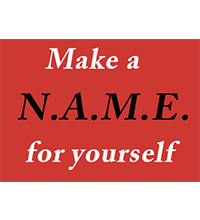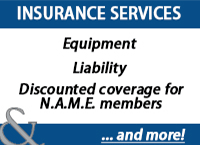By Stacy Zemon, Publisher & Chief Scribe
Your DJ company’s website is critical to the success of your business. So why make a herculean effort to drive traffic to it if, when people get there, it’s a dud? You’ve got to deliver value and make the most of each visitor!
1. Give Your clients Value
Writing good content for your site is about giving your clients value. By providing true, relevant content, you are doing two things:
1. Respecting the time and energy of both your clients and prospects by allowing them to quickly judge the relevancy of your site to their needs.
2. Providing your clients and/or visitors with a good value for their time when they are reading your site, blog, or newsletter.
Giving site visitors relevant and non-disposable content with a long shelf life has many additional benefits for you as well, including:
- increasing your viewership.
- getting people to link and/or talk about you.
- creating “stickiness”, which is getting readers to come back.
- building a brand for your DJ service.
- marketing your company as a respectable, trustworthy source.
- promoting yourself as an intelligent and sincere person.
2. Format Your Content
Formatting your content is an important part of engaging your readers and encouraging them to read on. It’s not just the content of your website, newsletter, or blog that matters: the formatting of this content determines how much your content is read and absorbed. Current research using eyetracking software shows us exactly how visitors read and scan through material to determine which items are worth their time. A page with a huge block of text is an eyesore to anyone trying to read it. Breaking up your pages and formatting your content is crucial to maximizing your site’s readability.
After writing your content using the hallmarks of good copywriting, follow these guidelines to format your content for the web:
- Use bullet points. Bullet points are a great way to list your ideas in a concise format.
- Edit your material for relevance and brevity. Don’t create an emotional attachment to your business writing—snip at will to keep your information on task!
- Use typography and font hierarchy. In your style guides or stylesheets, designate different font treatments for headings, subsections, body text, and links.
- Write, rewrite, and really focus on your headings and subheadings. Your section titles can make or break the information that comes after them. Being precise and clear will help you to get more readers for the rest of your information.
- Write in an easy-to-understand, conversational tone. Using too much technical jargon or writing text that doesn’t flow will only help you lose your readers.
- Increase your line height. Increasing the line height in your code increases the white space between lines and makes the text easier to read.
- Break up your text with paragraphs and punctuation. Providing content in bite-sized amounts can be easier for a visitor to process and absorb than long-winded, endless paragraphs. Don’t be shy about breaking things up with punctuation and new paragraphs.
3. Add Interactivity
By using widgets, you can add functionality to your site to increase user interactivity without any programming knowledge. Widgets also allow you to add additional value to your site through content and other information pieces, such as headlines, news, audio and video, and games.
To get started with widgets, browse through these sources:
- WordPress Widgets
- WidgetBox
- TypePad Widgets
- Widgets Lab
- MySpace Widgets
Don’t overdo it though—too many widgets can increase your load time and add clutter. White space generally increases readability (which is why you should increase your line height as mentioned previously), so choose your widgets carefully.
4. Create Clean Code
A well-built site has benefits for both your readers and search engines. For your visitors, a site built according to web standards:
- makes your site accessible to those with disabilities, those using non-standard browsers such as browsers on mobile devices and those using browsers other than Internet Explorer, which represents roughly 40% of the market.
- considers the visitor first and engages your client in the content.
For the search engines, a quality website:
- helps the crawler-bots to find all of your content through linking.
- helps the search engine index all of your content properly for search purposes.
5. Make Your Site Search-Engine Friendly
Here are some coding and content rules to follow when making your site search-engine friendly:
- Use CSS wisely.Use CSS (stylesheets) to replace text with an image if it contains important information, or at least use alt tags on your images, so that search engines will not skip over your graphics. (Better yet: don’t put important information in your graphics!)
- Be careful with JavaScript. Avoid using Javascript to display text or menus. Search engines will not be able to follow these links, and will end up only partially indexing your site.
- Submit your site to the top search engines. You can also go a step farther by creating a site map of your site and giving it to the major search engines so they can index you.
- Write for humans first and computers second. As search engine algorithms get more and more complex, relevant content will score higher, and sites employing “search engine tricks” will score lower. This is why you should use natural language when writing your content.
- Optimize for search engines last. Your DJ business can have the best products or services on the Web, but it doesn’t mean a thing if potential clients can’t find your site. The best way to get your website noticed is by ranking high in the results when users ask search engines like Google, Yahoo and MSN and others to scan the Internet for your kind of offerings.





